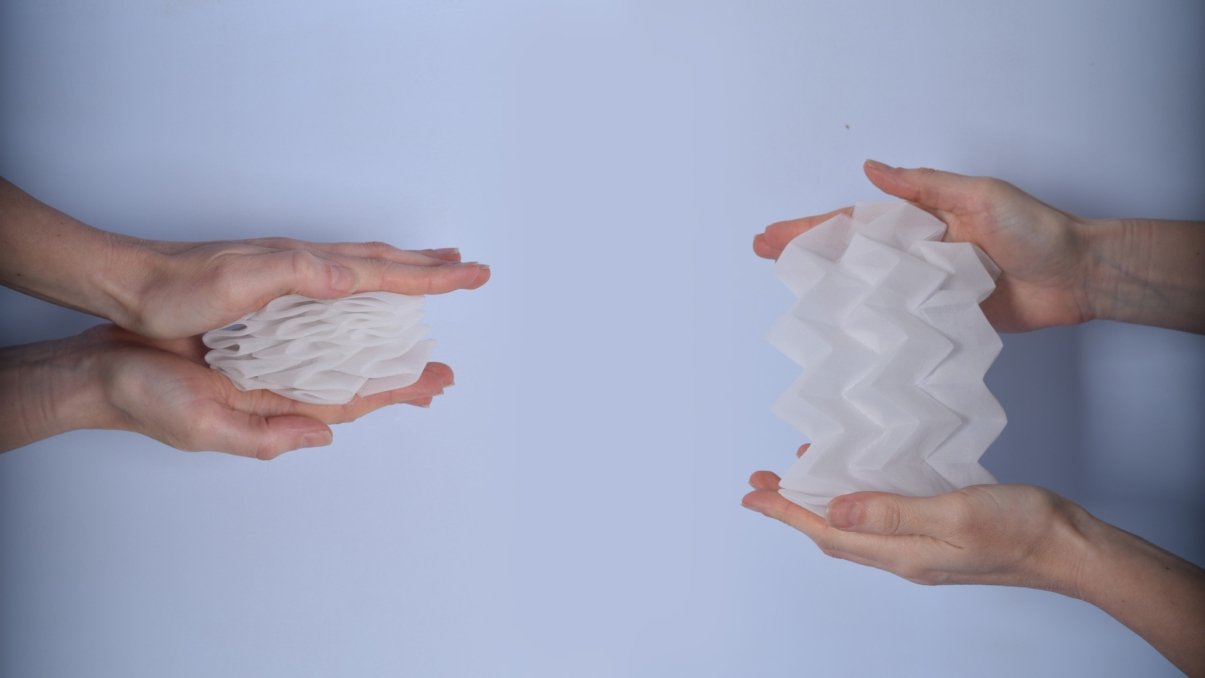
Designing Shape Changing Textiles
This project investigated how shape-changing textiles (fabrics that can actively change shape in interaction with the wearer or the environment) can be designed based on ecological principles to promote sustainable behaviour and well-being. Together with researchers Pauline van Dongen and Anna Wetzel, consortium partners AMOLF, the Ecomimicry Institute, Next Nature Network and UNStudio approached shape-changing textiles from social, ecological, technical and design perspectives. Master students from WUR also contributed to this research.

A practical and theoretical framework was formed around research-through-design, more-than-human design and ecomimicry, and examples of design of materials with shape-changing properties were sought. It also looked at examples of shape-change in nature, where ecological processes bring about shape-changing. One principle of natural shape-change, for example, is hygromorphism: shape-changing based on moisture. Strong hygromorphic properties are found, among others, in beech trees, a native species with a determining influence on local ecosystems. Beech therefore became an important subject and source of inspiration. Based on this, experiments were conducted and textile samples were developed using materials with hygromorphic properties, such as 3D-printed fibres with a high cellulose content, wood veneers and paper yarns.
The shape-changing textile samples were developed in an iterative process in which design principles influenced technical and ecological insights, and vice-versa. Besides the technical and functional properties of the samples and their potential application, their effect on the user and the user’s perception of the material’s reaction to the environment was considered. To complement this, a narrative was developed that does not focus on the human, but rather on the beyond-human or more-than-human perspective, which is becoming increasingly important in design.
The results of the research were presented in an event at Dutch Design Week. There, feedback was collected and the foundations were laid for follow-up research with an extended consortium.